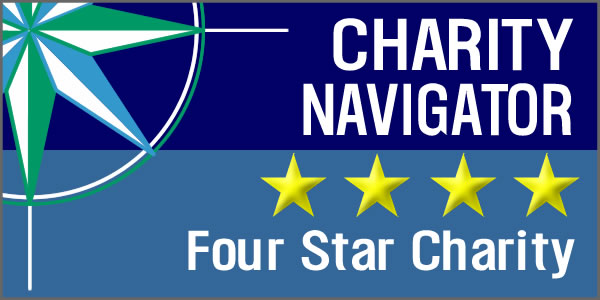
What is Cystinosis?
Cystinosis is a rare, genetic disease that affects 1 in 100,000-200,000 live births in the United States. It is a lysosome storage disorder caused by a mutation in the CTNS gene on the 17th chromosome, which encodes a protein called “cystinosin.” This protein’s function is to transport an amino acid called cystine out of an intracellular compartment called the lysosome. If the cystinosin protein is absent or dysfunctional, cystine accumulates within the lysosome and forms crystals, which kills the cells. Cystinosis slowly destroys the organs of the body including the kidneys, eyes, thyroid, muscles, liver, pancreas, gonads and brain.
Cystinosis is an autosomal recessive disease, which means both parents are carriers of a cystinosis mutation. Parents do not exhibit any symptoms of cystinosis. In such couples, the odds that each of their children will have cystinosis are 1 in 4. Cystinosis is considered an “orphan” disease because it affects fewer than 200,000 people. With such a rare disease affecting such a small population, money for cystinosis research is scarce. And yet research on complex diseases like cystinosis often leads to advancements in other rare diseases. Research on cystinosis has already led to advancements in Friedrich’s ataxia, Danon disease and Dent’s disease.
Symptoms & Manifestations
Cystinosis is the most common inherited cause of Fanconi syndrome, a renal tubular disease characterized by the inability of the kidneys to reabsorb electrolytes, amino acids, proteins and glucose from the urine. This leads to the loss of large volumes of urine, salts, minerals and nutrients. Laboratory testing may reveal severe electrolyte abnormalities, including low potassium (hypokalemia), low phosphorus (hypophosphatemia) and low bicarbonate (metabolic acidosis). Fanconi syndrome leads to growth failure, excessive thirst (polydipsia), excessive urination (polyuria), and soft bones (rickets). Treatment of Fanconi syndrome requires replacing lost electrolytes such as potassium, phosphorus and bicarbonate.
Without treatment, children with cystinosis progress to end-stage kidney failure by an average age of 8-10 years. Even with treatment, many children develop kidney failure in adolescence. In the past, this meant death. Today patients can be treated with dialysis and kidney transplantation. Even with a transplant, however, the disease continues to affect every other organ in the body.
Cystinosis causes growth failure and short stature. Many children have experienced vomiting, poor appetite and feeding difficulties. Many children require feeding tubes. Renal losses of nutrients and metabolic abnormalities also contribute to growth problems. Many children are treated with growth hormones.
Cystinosis causes bone disease, including rickets. This is largely because of urinary losses of phosphorus, calcium and vitamin D, and is improved with supplementation. Rickets can manifest with bowing of the wrists and the legs. Many children with cystinosis develop knock-knees (valgus deformity) which can be corrected with growth-modulating surgery. People with cystinosis also have an increased risk of bone fractures.
Cystinosis causes cystine crystal to form in the cornea, which can cause severe light sensitivity (photophobia) with squinting (blepharospasm). It can also cause pain and foreign-body sensation. Patients may also develop retinal disease, which can progress to blindness. Eye disease is treated with cysteamine eye drops.
Cystinosis can affect multiple endocrine organs, including the thyroid, pancreas and gonads. Thyroid disease is treated with thyroid hormone replacement. Pancreatic disease may manifest as diabetes mellitus and may require insulin therapy. Gonadal function and sexual development are usually normal in females, with multiple successful pregnancies and births reported. The majority of males, however, will experience delayed or incomplete puberty, decreased testes size and low testosterone levels. Testosterone can be supplemented. All males have azoospermia, which means there are no sperm in their semen, leading to infertility. Fathering of a child via percutaneous epididymal sperm aspiration (PESA) followed by intracytoplasmic sperm injection (ICSI) has been reported.
In adolescence and adulthood, cystinosis causes muscle disease (myopathy). The disease can lead to muscle weakness and atrophy, and predominantly affects the hands and muscles used in swallowing. This can lead to an increased risk of aspiration.
Cystinosis also affects the central nervous system. Children with cystinosis have normal intelligence, but some may have short-term visual memory impairment. There is an increased risk of intracranial hypertension, which presents with headaches and papilledema. Papilledema is swelling of the optic nerve and can cause blindness. This complication can be detected by an ophthalmologist with a retinal exam. There is also an increased prevalence of Chiari I malformations in children with cystinosis.
Diagnosis
Children with cystinosis are typically diagnosed because of growth failure, polyuria, rickets and electrolyte abnormalities.
Testing for cystinosis is done by measuring the content of cystine in white blood cells (specifically granulocytes). Blood can be drawn by any lab and sent to special reference labs, including the University of California, San Diego, for processing. An elevated cystine content provides a definitive diagnosis.
Around one year of age cystine crystals are visible in the cornea. A slit-lamp examination by an ophthalmologist can be used to diagnose cystinosis.
Cystinosis can also be diagnosed via genetic testing. The cystinosis gene is on the 17th chromosome. The most common mutation is a deletion of 57 thousand base pairs (57Kb deletion), although over 100 mutations have been reported.
Treatment
Fanconi syndrome is treated by replacing fluids, electrolytes, and nutrients that are lost in the urine. Most people require potassium, bicarbonate (or citrate), and phosphorus supplementation. They should have free access to water and may drink several liters a day. Some children have oral aversions and feeding difficulties and require feeding tubes for nutrition and medication administration.
The major treatment for cystinosis is a cystine-depleting medication called cysteamine. Cysteamine is taken up by cells and binds to cystine within the lysosome, allowing it to escape the lysosome through a different transporter protein. This prevents cystine accumulation and crystal formation. Cysteamine is available in two formulations: Cystagon™ and Procysbi™
Cystagon was approved in 1994 and must be taken every 6 hours to be effective. Procysbi was approved in 2013 and has a delayed-release coating so that it may be taken every 12 hours. Both drugs cause gastrointestinal symptoms including nausea, vomiting, heartburn, and sometimes diarrhea. Cysteamine is metabolized into sulfur-containing compounds, which cause halitosis and a bad sweat odor.
Corneal cystinosis is treated with cysteamine eye drops. The drops are meant to be given every hour while awake to reduce crystal accumulation. Other formulations are available in Canada and Europe.
Research in gene therapy has shown promising results in mice. In 2018 the FDA approved a clinical trial for six adult patients, to evaluate gene-corrected autologous stem cell transplant as a treatment for cystinosis. The first adult patient in the stem cell and gene therapy trial received the transplant in October 2019. In 2020, the second and third patients were transplanted, and in November 2021 the fourth patient was transplanted. On March 29, 2022, the fifth patient received the stem cell treatment and the sixth patient was transplanted on October 24, 2022. All six patients are doing well since their transplants.
We are optimistic that this treatment will stop the progression of cystinosis or be the cure for cystinosis. We are thankful to Dr. Cherqui who has dedicated her career to finding a cure for cystinosis.


